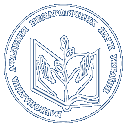- Адамюк, Н.Б. (orcid.org/0000-0002-4927-6257) (2020) Gesture assistive technology for students with hearing impairments Науковий часопис Національного педагогічного університету імені М. П. Драгоманова. Серія: Педагогічні науки: реалії та перспективи, 1/72 (5). pp. 5-8. ISSN 2311-5491
|
Text
2020, 11.pdf - Published Version Download (400kB) |
Abstract
This article explains the meaning of «sign language educational translator» and «deaf student». The classification of certain persons in the Deaf category by definition of the World Federation of the Deaf based on the use of visual language is clarified. International documents are listed that reflect the sociocultural approach to a deaf person. It is stated in which Laws of Ukraine the legal bases of state protection and support of the language used by deaf persons are disclosed. The direct and additional features of the educational sign language translator described in the Handbook of Qualification Characteristics of Occupations of Employees. His functions as a head of a study group of students with hearing impairments were briefly revealed. The essence of the technology of gestural assistance in the educational process of students with hearing impairment, which is an important prerequisite for obtaining a student with hearing impairment full and quality higher education. The factors of attractiveness of the data of an educational sign language translator are listed and examined in detail as a comfortable and effective condition for communicative interaction between him and a student with hearing impairments, among which an uncompromising attractive factor of cooperation is a high level of gestural communicative competence. In turn, it is noted what character traits students with hearing impairment appeal to sign language translators. Formal and informal relationships between the sign language translator and deaf students are highlighted, the latter of which can have both positive and negative effects. The focus is on the educational interpreter's own speech in the educational process and the reflection of the speech of the teacher of the higher education institution for the correct presentation of the student with hearing impairment, with the number of reflections of speech should coincide with the number of teachers who teach disciplines in a special group of deaf students. The necessity of the expert in sign language translation of the code of ethics of the translator of sign language in the process of language assisting to students with hearing impairment is emphasized in brief.
| Item Type: | Article |
|---|---|
| Keywords: | educational sign language translator, responsibilities, translators' attractiveness, translator's ethics |
| Subjects: | Science and knowledge. Organization. Computer science. Information. Documentation. Librarianship. Institutions. Publications > 3 Social Sciences > 37 Education > 376 Education, teaching, training of special groups of persons. Special schools > 376.3 Виховання та освіта осіб із вадами зору, слуху, мови та нервовими захворюваннями. |
| Divisions: | Mykola Yarmachenko Institute of special education and psychology of National academy of educational sciences of Ukraine > Ukrainian Sign Language Department |
| Depositing User: | SignLangLab ISP |
| Date Deposited: | 11 Aug 2021 23:15 |
| Last Modified: | 11 Aug 2021 23:15 |
| URI: | https://lib.iitta.gov.ua/id/eprint/726186 |
Downloads
Downloads per month over past year
Actions (login required)
 |
View Item |




